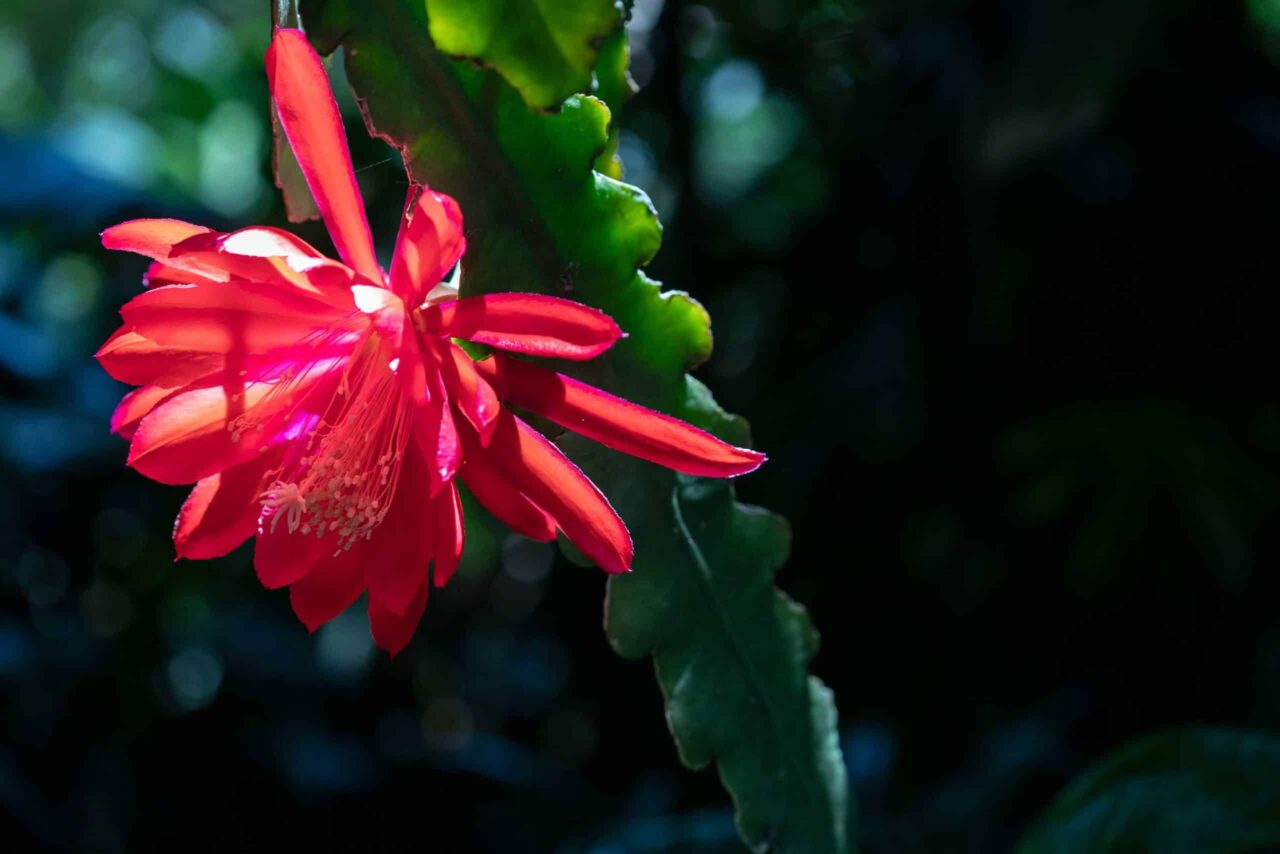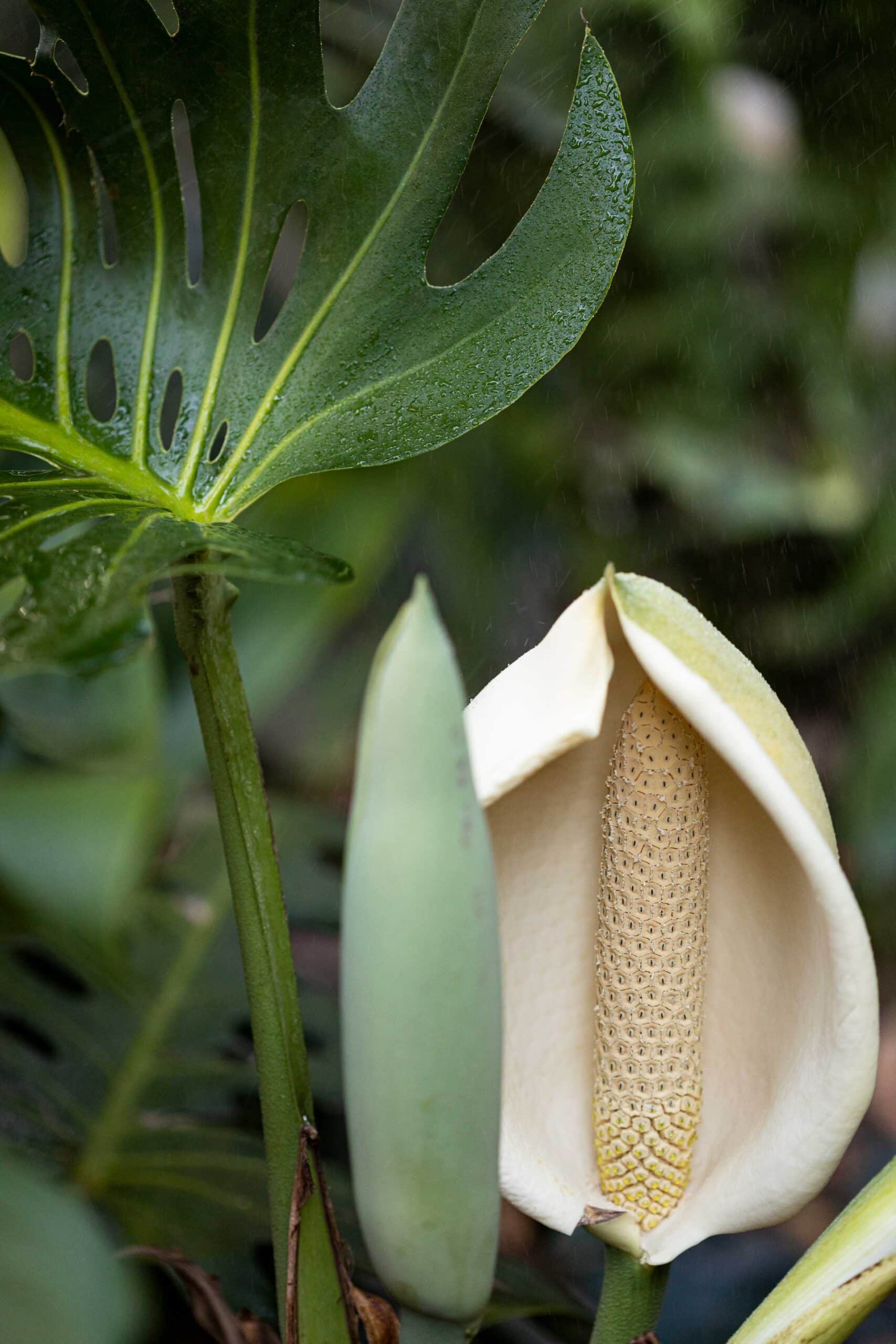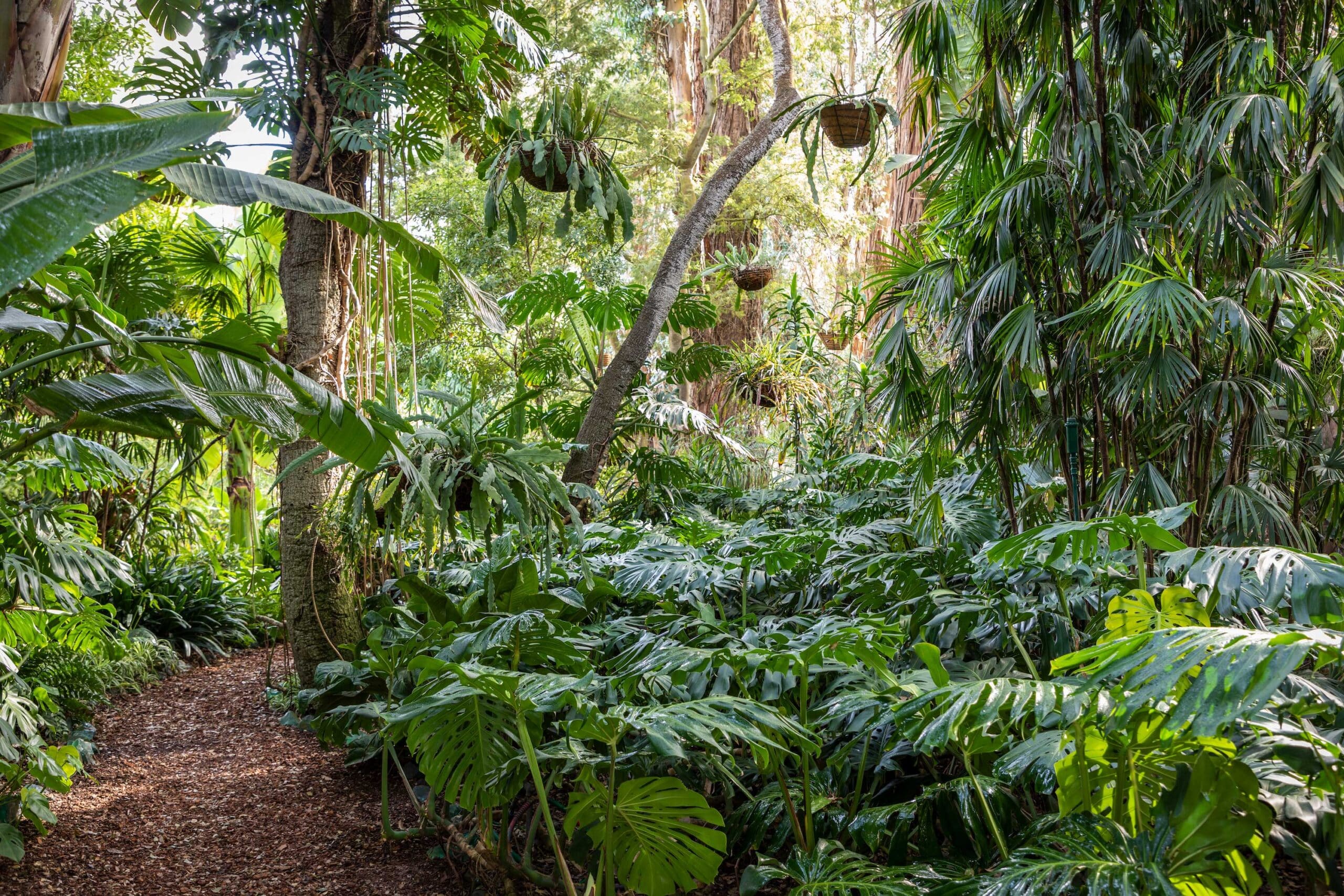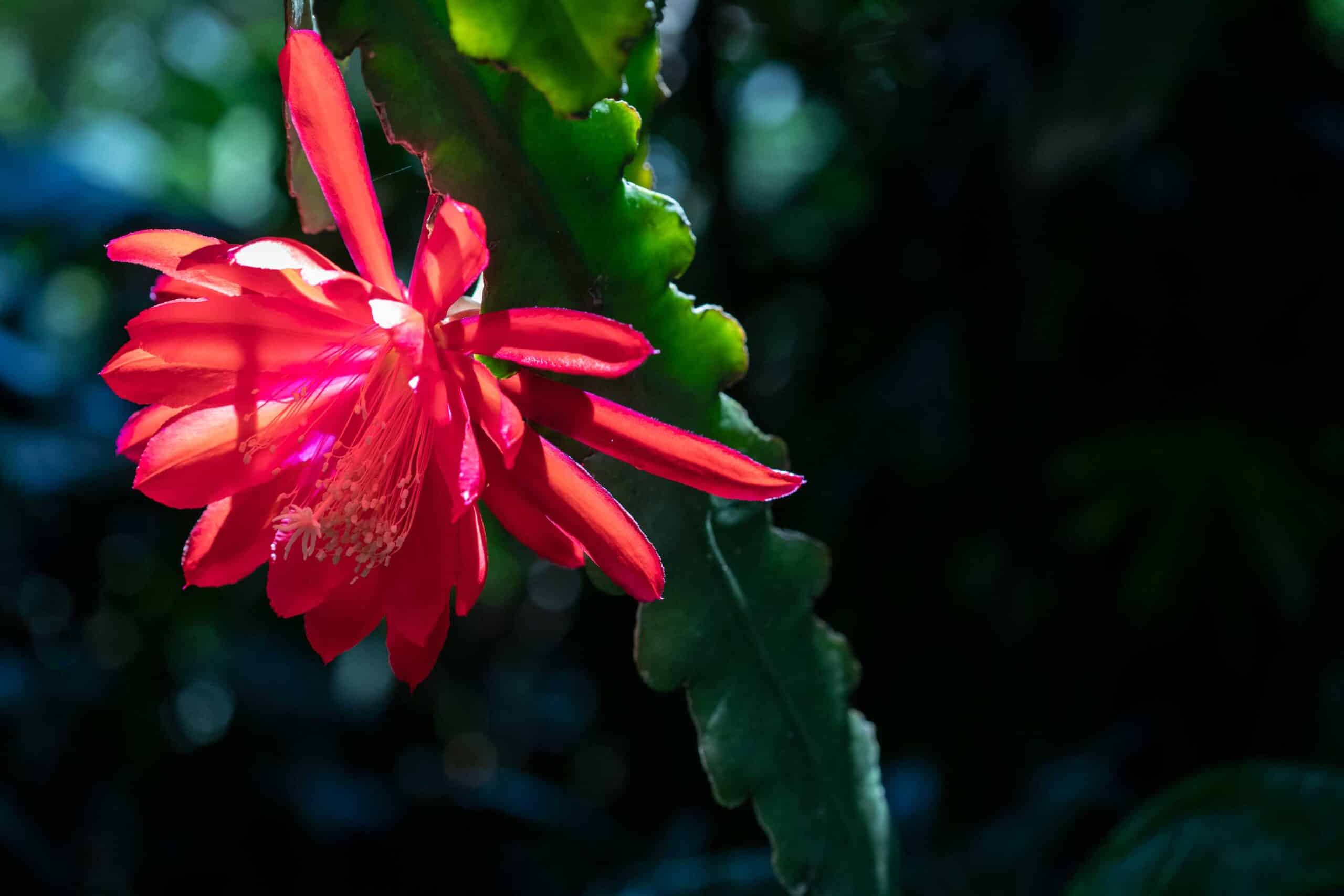Tropical Garden
Down a wandering path, next to a towering group of eucalyptus trees grows the spectacular Tropical Garden
Tropical Garden
Lotusland’s Tropical Garden began with Madame Ganna Walska’s collection of orchid cacti (Epiphyllum) which were moved to this location in the late 1970s. Compared to many of the other gardens which were intricately planned, the Tropical Garden is a culmination of these original epiphyllum and years of gardeners planting tropical species around them. As you walk through the Tropical Garden, enjoy the lushness of the colossal foliage and feel the cooling shade provided by the canopy. The rock-lined streambed carries runoff from rains and overflow water from the Japanese Garden pond.
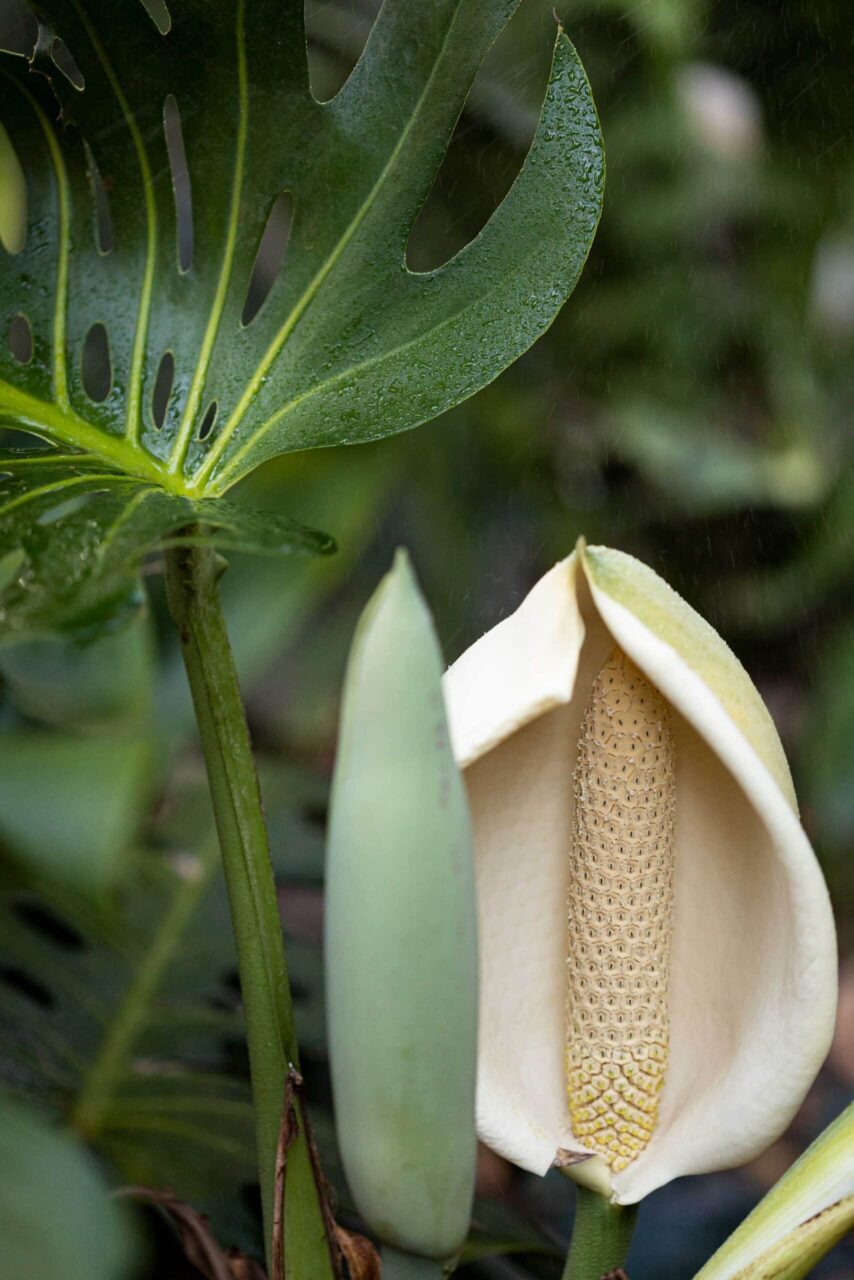
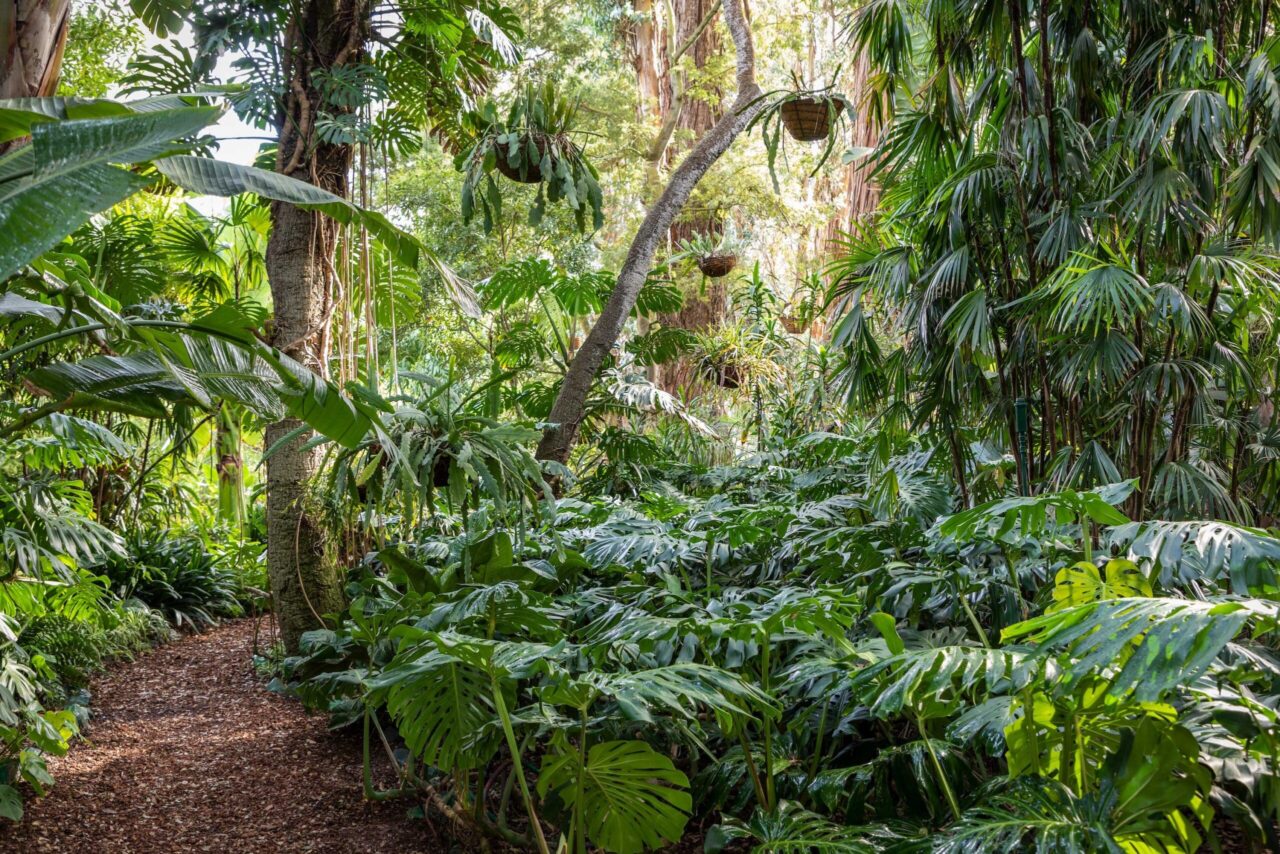
Swiss Cheese Plant (Monstera deliciosa)
This monster of a vine is native to tropical rain forests in Mexico and Central America, where it grows 60 feet or more up into the canopies of trees, clinging to their trunks with roots all along its length. Its common name is derived from its characteristic splits and holes, which allow drenching rains to pass through and light to pass down to lower portions of the plant.
Orchid Cacti (Epiphyllum)
This strange group of cacti is often spineless despite its classification as a cactus, and what may look like leaves are actually fleshy, water-filled stems. The name, orchid cacti, refers to their showy flowers, which bloom in May and June, and their habit of growing on a host plant, as orchids do.
Adaptations for Sunlight
In tropical ecosystems, plants are shaped by the need for sunlight in a competitive environment. Some plants sprout tall, ruling the sky economy at the expense of the competition. Others root themselves on a host plant, also known as growing epiphytically. Still others vine their way to the top. Your walk through the Tropical Garden will bring you into contact with many examples of how the need for sun shapes species and organisms.
Eucalyptus Trees
Many of the towering trees in the Tropical Garden are Eucalyptus globulus (Tasmanian blue gum) native to southeastern Australia. Now a common tree in Santa Barbara County, eucalyptus were brought to California in 1869 in hopes that they would become a stable source of lumber. Able to thrive in many environments, these trees are sometimes controversial in California for their invasive habit.
Sustainability
The Japanese Garden pond is not a natural body of water. It uses biofiltration in a closed system to maintain a healthy environment for aquatic life. A system of pipes and pumps run underground from the pond biofilters to the vault where pollutants are separated from the water. The biofiltration process uses microorganisms to remove pollutants which in this case are repurposed as nutrient rich fertilizer in the Tropical Garden.
design inspiration
A surprising number of tropical plants thrive in the Mediterranean climate of Santa Barbara due to its high number of frost-free days.
